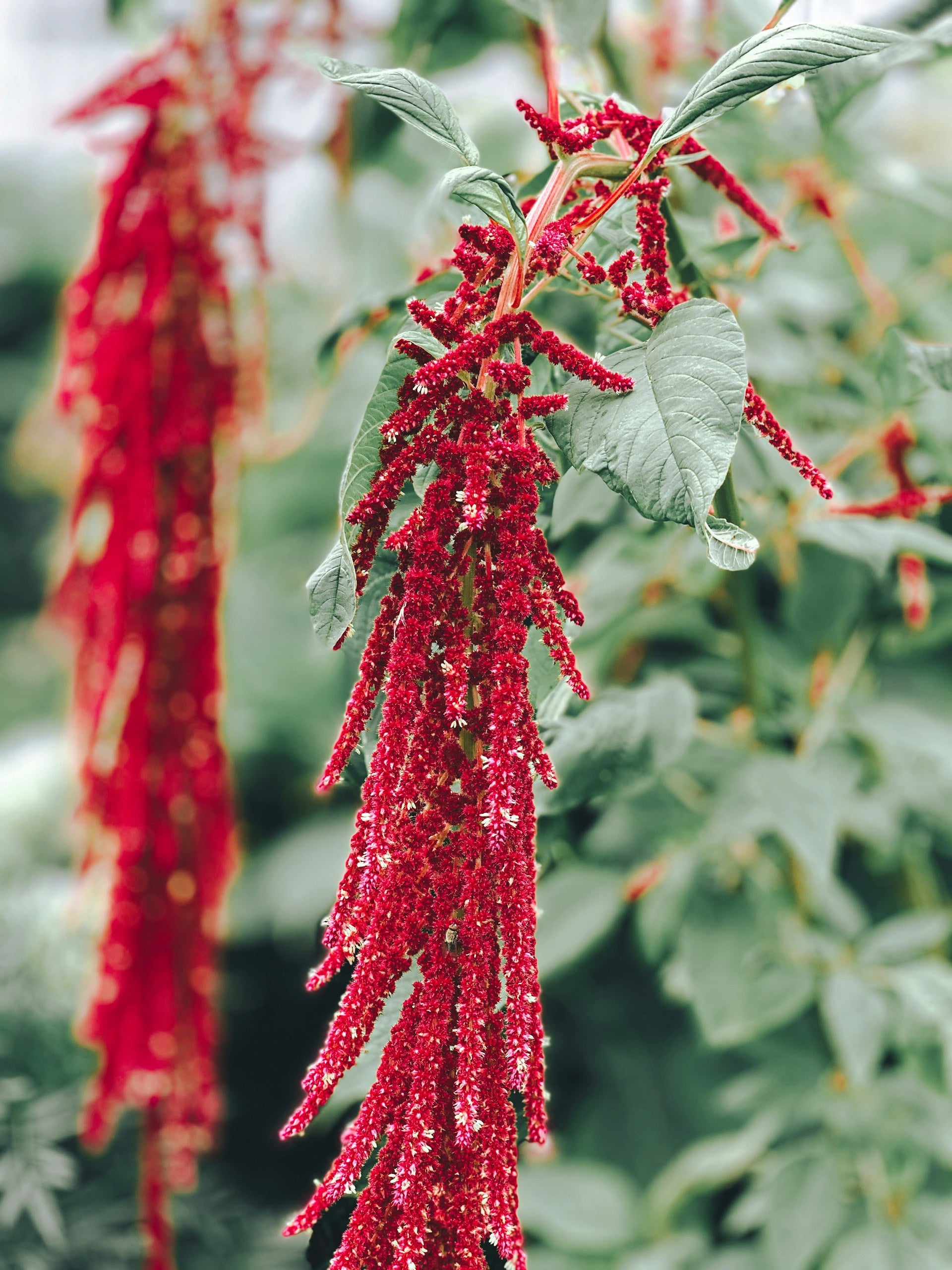Storing Amaranth in the Fridge
For those who enjoy the versatility and health benefits of amaranth, understanding the best storage practices is key to maintaining its freshness and nutritional value. Proper storage not only prolongs the shelf life of amaranth but also ensures that it remains safe for consumption.
Importance of Proper Storage
Amaranth, like many other grains, is susceptible to spoilage due to factors like moisture, air exposure, and temperature fluctuations. Storing it in the fridge can significantly retard the growth of spoilage organisms and preserve its quality. Proper storage can also help in retaining the grain's texture and flavor, making it more enjoyable when it's time to cook.
When you store amaranth in the refrigerator, you're also protecting it from pests and contaminants that could otherwise find their way into your pantry. Remember to store amaranth in a sealed container to prevent it from absorbing odors from other foods in the fridge. Proper storage is not just about prolonging shelf life; it's also about ensuring that every meal you make with amaranth is delicious and nutritious.
How Long Can Amaranth Last in the Fridge?
The shelf life of amaranth in the fridge varies depending on whether it is raw or cooked. Raw amaranth, when stored correctly, can last for several months due to its low moisture content. For cooked amaranth, the shelf life is significantly shorter due to increased moisture, which can encourage bacterial growth.
| Amaranth Type | Shelf Life in Fridge |
|---|---|
| Raw Amaranth | 4-6 months |
| Cooked Amaranth | 5-7 days |
It's crucial to note that these are approximate times, and the actual shelf life can be influenced by factors such as the freshness of the amaranth when bought, the consistency of fridge temperature, and how well it is sealed. Always check for signs of spoilage before consuming stored amaranth. If you're looking to understand more about the shelf life of other foods, consider reading articles like how long does mango juice last in the fridge? or how long do shiitake mushrooms last in the fridge? for comparison.
To ensure maximum freshness, store your amaranth in airtight containers and place it in the coldest part of your refrigerator. By following these guidelines, you can extend the shelf life of your amaranth and enjoy its health benefits for as long as possible.
Factors Affecting Shelf Life
When you store amaranth in your refrigerator, its shelf life can be influenced by various factors. Understanding these can help you maximize the longevity of your amaranth, ensuring that it remains fresh and nutritious for as long as possible.
Packaging of Amaranth
Proper packaging is essential to protect amaranth from moisture, air, and other contaminants that can hasten spoilage. Whether you have whole amaranth grains or flour, the ideal packaging should be airtight and moisture-proof.
- Whole Amaranth Grains: Store in an airtight container to prevent moisture and pests from getting in.
- Amaranth Flour: Keep it in a sealed bag or container, away from direct sunlight and sources of heat.
Temperature of the Fridge
The temperature of your fridge plays a critical role in preserving the freshness of amaranth. The optimal temperature range for most refrigerators is between 35°F and 38°F (1.7°C and 3.3°C). At this range, the growth of microorganisms that could spoil your amaranth is inhibited.
| Fridge Section | Recommended Temperature |
|---|---|
| Main Compartment | 35°F - 38°F (1.7°C - 3.3°C) |
| Crisper Drawer | 32°F - 35°F (0°C - 1.7°C) |
Humidity Levels
Humidity levels within your fridge can affect the shelf life of amaranth, especially if it's in grain form. High humidity can lead to condensation and moisture buildup, which is detrimental to the grains.
- Low Humidity: Best for storing amaranth grains to prevent clumping and mold growth.
- Moderate Humidity: Suitable for fresh amaranth leaves, if applicable, to keep them crisp.
It is beneficial to use the crisper drawer for fresh amaranth leaves, adjusting the humidity settings according to your refrigerator's features. For more insights on storing different food items in the fridge and their shelf life, you might find these articles helpful: how long does green juice last in the fridge? and how long does celery last in the refrigerator?.
By being mindful of these factors—packaging, temperature, and humidity—you can ensure that your amaranth stays fresh and retains its nutritional value for an extended period when stored in the fridge.
Signs of Spoiled Amaranth
Recognizing the signs of spoilage in amaranth is crucial to ensure food safety. Here's how you can identify if your amaranth has gone bad.
Visual Changes
The first sign that amaranth is no longer fresh is a change in appearance. Fresh amaranth should have a vibrant color and look dry and loose. If you observe any discoloration, such as dark spots or signs of mold, it is a clear indicator that the amaranth has spoiled and should be discarded.
Smell Test
Amaranth that is fresh and safe to consume will have a subtle, nutty aroma. If you detect any sour or off odors when you inspect your stored amaranth, this is a sign that it has started to spoil. Trust your nose - if the amaranth smells different than when you first stored it, it's best to err on the side of caution and not consume it.
Texture Evaluation
Fresh amaranth grains should feel dry to the touch. If you feel any stickiness, dampness, or clumping when you handle the amaranth, it may indicate the presence of moisture which can lead to spoilage. Moreover, if the texture has changed noticeably, it's likely that the amaranth is no longer good to eat.
In the event that you identify any of these signs of spoilage, it's important to dispose of the amaranth to avoid the risk of foodborne illness. For guidance on how to maximize the shelf life of other foods in your fridge, explore articles like how long does celery last in the refrigerator? and how long does orange last in the fridge?. Remember, proper storage is key to extending the freshness of your food items.
Storing Cooked Amaranth
Once you've cooked your amaranth, it's important to store it correctly to maintain its freshness and extend its shelf life. Below are guidelines for cooling, refrigerating, and reheating cooked amaranth.
Proper Cooling Techniques
Before you refrigerate your cooked amaranth, it's crucial to cool it properly to prevent bacterial growth. Spread the amaranth out on a flat surface or in a shallow container to allow it to cool quicker. Ensure that it reaches room temperature within two hours of cooking. Once cooled, it should be refrigerated promptly.
Refrigeration Guidelines
Cooked amaranth can last in the fridge for up to one week when stored properly. To maximize its lifespan, place the cooled amaranth in an airtight container. This not only helps to keep out moisture and other contaminants but also prevents the amaranth from absorbing flavors and odors from other foods in your fridge.
| Storage Condition | Shelf Life |
|---|---|
| Room temperature | 2 hours max |
| Refrigerated (in an airtight container) | Up to 7 days |
For more information on how long other foods last in the fridge, explore articles like how long does mango juice last in the fridge? or how long do shiitake mushrooms last in the fridge?.
Reheating Tips
When you're ready to enjoy your stored amaranth, reheat it until it's steaming hot all the way through, which typically means reaching an internal temperature of 165°F (74°C). You can reheat it on the stove over medium heat, adding a splash of water to prevent it from drying out. Alternatively, use a microwave, stirring occasionally to ensure even heating.
Be mindful that reheating amaranth multiple times is not recommended, as it can increase the risk of foodborne illness. Aim to only reheat the portion you plan to consume. For more on reheating and food safety, refer to articles such as how long do jalapeños last in the fridge? for vegetable storage tips and how long does taco meat last in the fridge? for guidelines on storing cooked meat.
Using Frozen Amaranth
Freezing is a great method for extending the shelf life of cooked amaranth, ensuring that you can enjoy this nutritious grain even when it's out of season or if you've cooked it in bulk. Below are guidelines for freezing cooked amaranth and how to properly thaw and reheat it for later use.
Freezing Cooked Amaranth
When freezing cooked amaranth, it's important to follow these steps to maintain its quality:
- Allow the cooked amaranth to cool completely to room temperature. This prevents condensation from forming, which could lead to freezer burn.
- Portion the amaranth into meal-sized servings for easier thawing and reheating later.
- Pack the portions in airtight, freezer-safe containers or resealable freezer bags, removing as much air as possible to prevent oxidation.
- Label the containers or bags with the date of freezing; cooked amaranth can last in the freezer for up to 3 months.
By following these steps and ensuring your amaranth is stored properly, you'll be able to enjoy it at a later time with minimal loss of texture and nutritional value.
Thawing and Reheating Instructions
Thawing and reheating frozen amaranth can be done efficiently to retain its quality. Here's how:
Thawing:
- Transfer the frozen amaranth from the freezer to the refrigerator and let it thaw overnight.
- For a quicker method, you can use the microwave to defrost the amaranth by using the defrost setting or low power, stirring occasionally.
Reheating:
- Once thawed, reheat the amaranth on the stove over medium heat, stirring frequently until it's heated through. You may need to add a splash of water or broth to prevent it from drying out.
- Alternatively, you can reheat it in the microwave, covering the amaranth and stirring periodically to ensure even heating.
Always ensure that the amaranth is heated to 165°F (74°C) before consuming to ensure it's safe to eat. Also, remember that reheated amaranth is best enjoyed immediately and should not be refrozen.
By properly freezing, thawing, and reheating your amaranth, you can enjoy this versatile grain anytime you want, without compromising on taste or nutritional value. If you're interested in the longevity of other foods in your fridge, check out our articles on how long does mango juice last in the fridge? or how long do shiitake mushrooms last in the fridge? for more insights.
Get Your Upgrade or New Addition at Fridge.com
Shop the world's best brands at Fridge.com.
Whether you're searching for your perfect fridge, freezer, wine fridge, beer fridge, ice maker, or kegerator, we have what you need.
We also have tons of awesome articles about kitchen stuff and home news. Enhance your home, garage, backyard, patio, and office with the coolest essentials. With every necessary type of residential refrigerator or freezer in our collection, we've got you covered.
Elevate your game and shop now at Fridge.com!






